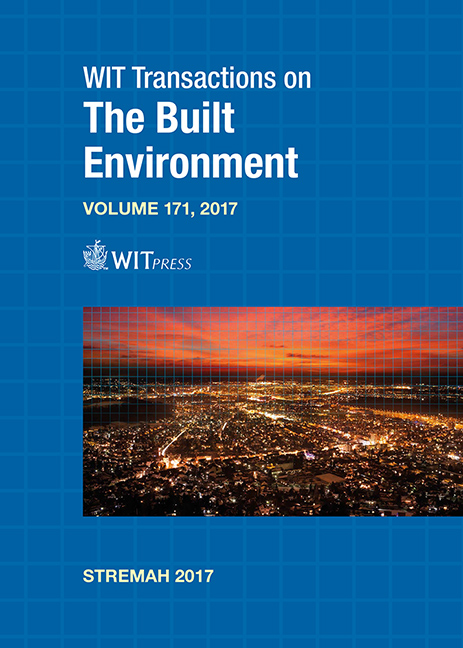THE ROLE OF MODULAR CONSTRUCTION IN THE REVIVAL OF TRADITIONAL EMIRATI SOUKS
Price
Free (open access)
Transaction
Volume
171
Pages
11
Page Range
75 - 85
Published
2017
Paper DOI
10.2495/STR170071
Copyright
WIT Press
Author(s)
SARAH KHALIL ELMASRY
Abstract
In the Arabian Gulf city of Dubai, high demand in the building industry has led construction companies to rely on modular building components for their proven savings in time and cost. Although the architecture of the retail environment in the city during the previous decades was globalized, lacked identity, and relied on the concept of “Spectacle”, an emerging State goal is preserving local heritage and identity, which directly reflected on the architecture of some recently built retail and multi-use developments in Dubai using modular systems. In search of the architectural language prevailing with this movement, the author is seeking to answer the question if modular construction necessarily pulls architecture away from its deeply-rooted identity? Can designers use the characteristics and opportunities which modular construction has to offer while maintaining the original qualities of the local built environment? Through prolonged field observations, it is found that modular construction in this particular Dubai experience was able to re-introduce significant architectural elements of the traditional Emirati souk from the pre-oil era. However, this revival reflected lessons learnt from the nearer past, for example, experimenting with new materials instead of local, natural ones as influenced by experiences from the 1960s, passive cooling strategies were not taken into consideration, instead, interiors relied on mechanical cooling systems and emphasized the “spectacular” qualities as influenced from the architecture of the 1990s. The Dubai experience during the last decade was able to stretch the limitations of modular construction, from practical to aesthetical, and from “just another” construction method to a contributor the cultural statement. It also successfully initiated a new definition of spectacle, based on cultural, social and sometimes political statements, declined the over-scaled, globalized typologies, and offered a revival of the local Emirati souk for the 21st century.
Keywords
architecture, Dubai, local identity, modular construction, retail environments, spectacle, traditional architecture




